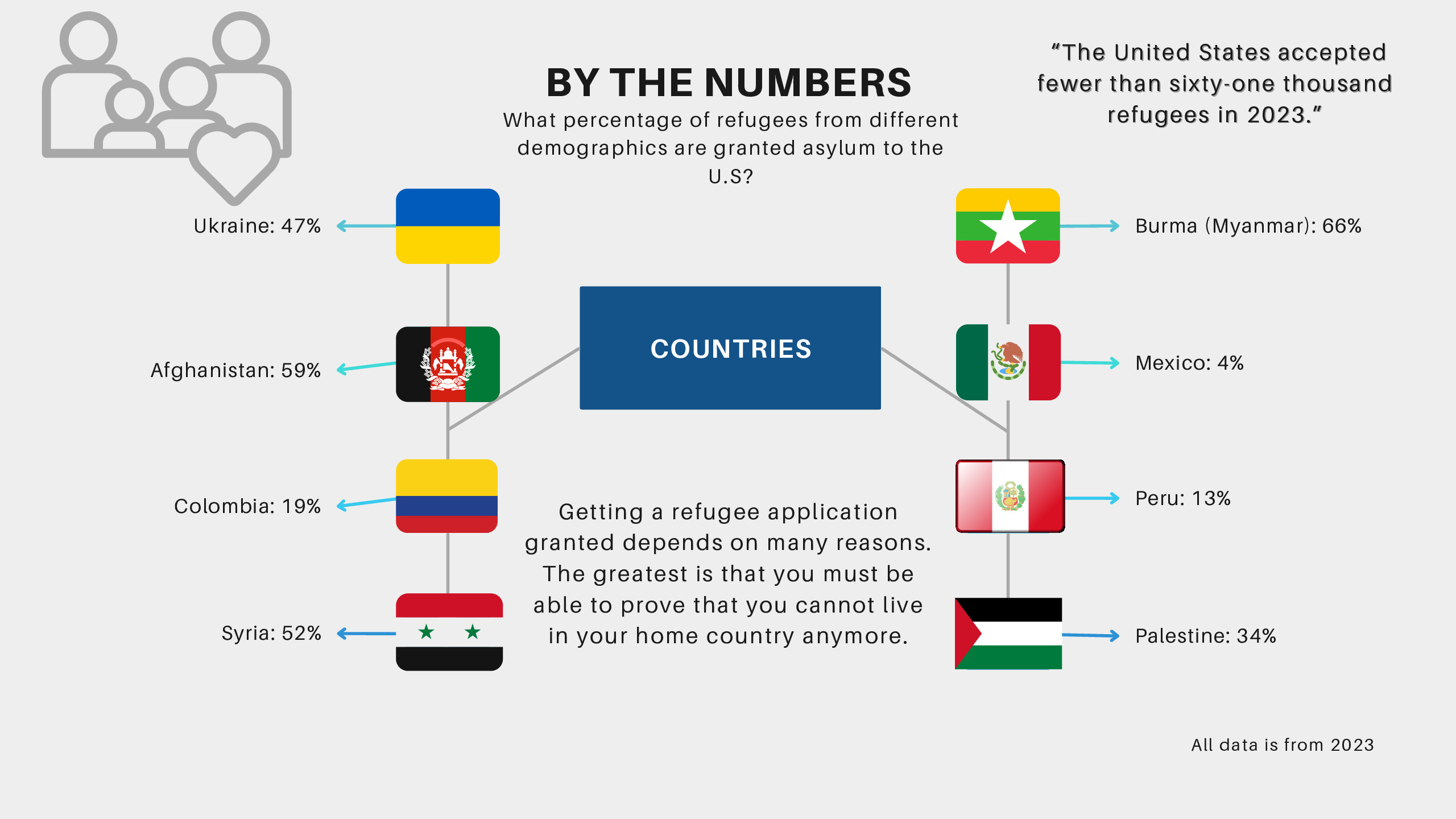Government Policies Determine the Refugee Process
PHOTO: Graphic by Boyeon Choi, using Canva elements.
By Boyeon Choi
BlueDevilHUB.com Staff-
The term “refugee” is often used loosely, but do most people truly understand what that means?
Put simply, refugees are migrants who have been relocated or misplaced to a foreign country due to uncontrollable circumstances such as natural disasters or religious persecution.
According to UC Davis political science professor Bradford Jones, to categorize broadly, there are two main types of migrants that come into the U.S.
“One comes in not wanting to get caught, while the other seeks to be noticed by the government,” Jones said. “(Refugees) are the latter, they want to be seen by the government.”
Legally speaking, in the United States, this is perfectly acceptable. When migrants come to the U.S. from other countries, they are allowed to file and seek help from the government, which is why they are referred to as asylum seekers.
Aside from asylum seekers, there is also temporary protected status (TPS) for individuals from certain countries. Slightly different from asylum seekers, these people don’t need to make their own personal case to prove that they require assistance.
Although the allotted amount of time varies, people with TPS only stay in the U.S. for a short period. Their application and admission process is significantly quicker than asylum seekers, who must go through vigorous background checks and medical examinations, all while proving why they should be admitted.
How the process works is this: refugees leave their country and come to the U.S., then register themselves to the United Nations High Commissioner for Refugees (UNHCR) and file their case for temporary or permanent residence based on their unique circumstances.
The U.S. Department of State claims that “individual cases… by virtue of their circumstances and apparent need for resettlement” are given priority.
Although anyone is allowed to file for an asylum grant, only about 35% of people who applied received a grant in 2021 in the United States, a record low. Factoring in the Covid pandemic and the prior Trump administration restricting immigration to the U.S., this number is not surprising.
The Refugee Act of 1980, passed during Jimmy Carter’s administration, established a more structured system of admitting refugees. Although the initial cap was to take in 50,000 refugees annually, each following president made their own decision on the cap number.
However, even during Biden’s administration now, the overall trend for low admittance of refugees hasn’t changed much. “The United States accepted fewer than sixty-one thousand refugees in 2023,” according to the Council on Foreign Relations.
For migrants from Mexico, organizations like “Humane Borders,” which Jones volunteers for and received an award for, are active to help migrants survive once they cross the border. “We don’t (directly) help the migrants cross the border, that’d be illegal, but once they do, we place water bottles and stations to keep them hydrated,” Jones said.
In addition, “Uniting for Ukraine,” is a Department of Homeland Security (DHS) program that helps specifically with Ukrainian refugees. This program was started in an effort to help those who were fleeing from Ukraine after Russia’s invasion. “Uniting for Ukraine” allows for an unlimited number of Ukrainian refugees to come to the U.S. legally without a visa and work for two years.
American sponsors support individual families and the process and approval for each case has also been proven to be efficient. This has helped roughly 187,000 Ukrainian refugees to relocate to the U.S. with little to no problems.




